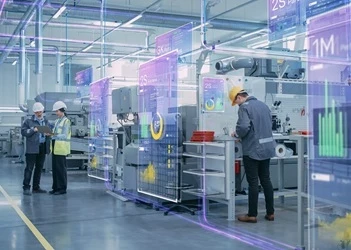How data, technology and effective communication enable business alignment
Global reinsurance firm Gen Re deployed data-as-a-service to drive change and alignment across the business
Add bookmark
Gen Re is one of the largest reinsurance companies in the world, founded in 1846 to provide financial protection to companies in the property, casualty, life and health insurance sectors. A subsidiary of Warren Buffet’s Berkshire Hathaway, it has almost $US 11.5 billion in net written premium and operates in 22 countries.
Speaking at Big Data LDN in September 2023, Matthew Montero, vice president and head of enterprise data services at Gen Re, explained how his background as an actuary and data scientist helped drive digital transformation across an organization founded more than 175 years ago.
Linking data science and analytics to the business
Montero began his career as an actuary, where he used mathematical and statistical techniques to assess and manage risk. This is crucial knowledge for the insurance sector, but Montero explained that to better understand the underlying data he was assessing, he retrained as a data scientist. This new role enabled him to analyze and interpret complex data to then extract valuable insights for decision-making.
As a data scientist, he developed actuarial models for reserving and pricing, then built end-to-end applications to provide data to the end users. Doing this meant that Montero was able to explain processes to leaders effectively. “In other words, I became the liaison between the data scientists and the leaders of the company.”
Disrupting the status quo
Business transformation projects often involve a significant amount of disruption, particularly in the case of a legacy company, for example by bringing in new technology, replacing Excel spreadsheets and introducing automation. This leads to a number of considerations, as Montero explained: “How are you going to scale in terms of deploying these products? Who is going to do to development support, adding new features and new capabilities? And who is going to make sure it stays up and running?”
“When building a team, having that business and technical knowledge merged together to enable the team to create and build new products is key to strive forward with new technology,” he added.
Alignment across the business
Next is the question of enterprise alignment, ensuring everyone within the organization understands the transformation – especially IT – and getting buy-in from leadership. To ensure this, Montero dived in to the IT side of things. “This is where we look at things from an enterprise perspective, such as what is the technology stack and how we deal with budgeting. IT doesn't make a profit, but it does bring in solutions to the business.”
In the case of Gen Re it also involved looking at how the organization prioritizes projects across all its segments across the globe. Other key factors were ensuring data and assets were secure, and what to do if a service went down.
“From a leadership perspective, there are two pieces that are critical,” Montero noted. “One, the strategy and alignment to that strategy. When I started, we were one year into this cloud journey where we did a lift and shift from on-prem and moved into the cloud, building a modern enterprise data architecture utilizing cloud services. Second, developing a strategy to achieve that. This is where the definition of data-as-a-service comes from, it’s a data management strategy that utilizes cloud services for delivering data usage, integration, processing, and analytics solutions.”
Change management and communication
Underpinning this is the need for effective communication, which requires translating the steps Montero and his team were taking into business terms. “This was an eye-opening experience for me,” he said. “When working with the business, you speak the business language. And then when we have feedback, we re-translate that back to IT knowledge.”
“If the business requirement is that we need somebody to stay up and running for both internal and external users, we might translate it to high availability, and look at solutions such as load balancers and serverless solutions,” Montero explained. “If it is about support, we might have a look at L1 support, which has to be there 24 hours, seven days a week. And we need to deliver these answers into business terms to the business.
“Reflecting back on past organizations that I've worked for, this was a significant skill gap within IT,” he added. “That’s mainly because we had very strong technical knowledge and domain-specific business knowledge that wasn't merged together.”




















